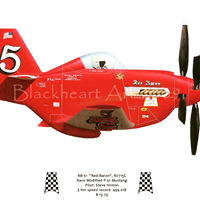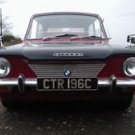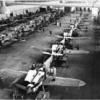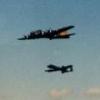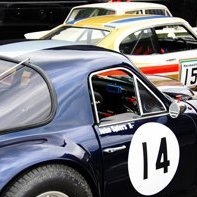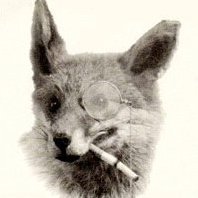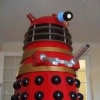Leaderboard
Popular Content
Showing content with the highest reputation on 18/03/19 in all areas
-
This is the one that's broken my slump (I Hope)... started just Before Christmas, and finished in time for this years Bolton show. Nice kit, but not without a few issues. Finished with MRP paints, which are a joy to use. So here's the pics..... All comments welcome, just waiting for traffic warden... cheers DaveH34 points
-
Hello, my latest achievement an EF-18M kinetic 1/48, Tiger meet 2016, decals ModelMaker D48090 Best Regards31 points
-
Its been a while since I have posted an RFI (work, travel and children!), but here is the 1:48 KittyHawk SU-22M4 Fitter. Not a kit to cut your teeth on, but certainly not as bad as some of the online reviews would have you think. My biggest issues were: The multi-part fuselage (take your time and try not to introduce an error, ask me how I know!). Wing Fences needed a little bit of dry fitting, trimming and fettling (not that difficult). Pylon locations were indistinct and the instructions were vague and missing detail. Jet pipe was too long, easy enough to cut out a section. Nose cone has no wedge shaped splitter, either FOD guard it or use AM. However there are some very good bits in regards to the kit, the wing fit was exceptional. Huge selection of stores and a plethora of potential options for users both in the kit decals and aftermarket. Aftermarket used: Eduard Interior 49829 Eduard Brassin B-8M1 Rocket pods and pylons 648 041 CWS nose cone Wolfpack resin seat Master Pitot (very, very fragile) and Model Maker decals and stencils (really thin and lots of stencils, instructions got a bit vague with the high numbered stencil identification but they are reccomended) Paints were Gunze with levelling thinners, oils used for cockpit, seat details, wash and weathering. I have been informed since taking the pictures that the dorsal spine blade aerial has been updated, so that's a minor job for later this week to scratch and correct.27 points
-
This is the first off the mark for me in 2019. Its the Revell 1/48 Tornado Gr.4 in 617 Sqn colours. Its my tribute to the Tonka retiring from RAF Service. This kit is pretty good, there is enough detail out the box to make a decent model. There were one or two fit issues but I managed to wrestle it into shape. I used colour PE to lift the cockpit and seatbelts. Also a brass pitot tube. Please comment or leave any questions you many have and thanks for looking!25 points
-
I have begun to love Valom as a kitmaker. Not because their engineering is perfect - cuz it isn't - but because their type selections seem tailored specifically to me. I really think the DH-91 is one of the prettiest airliners in history. But reality set in pretty quickly. Fit is uncertain, and with a NMF coming up much tension was created. That and absolute piles of PSR dust. When I finally couldn't take it any longer, I did up the paint, which looked good enough after a couple of tries. Markings are from the box (no aftermarket here) and the windows were masked with an Avalon set. Their vinyl masks worked than those hideous label-material ones in the MikroMir kits, but I still prefer kabuki tape. Valom will continue to figure large in the 2019 programme. Next up is the B-45, then the Harrow, then the Salmon. When they all get completed is anyone's guess. This is completed aircraft #510 (8 aircraft, 1 ordnance, 2 vehicle for the year 2019), finished in March of 2019.21 points
-
Here with my recently finished Italeri 1/32 Mirage IIIE What can I say about this kit? Well I love Mirages and particularly the Mirage III. If I didn't, this kit would be in the bin! Soft and sometimes incomplete surface details. The surface is rough. The instructions are unclear in a number of areas. The nose cone in particular and some other major parts are poorly fitting - in fact I would go so far as to say the nosecone is an appalling fit for a modern kit! The wheels are a joke - the tread on the main wheels, well, what there is, bears no resemblance to the real thing. I wasn't helped by a strangely moulded canopy which didn't even start to fit and was strangely flexible (Italeri did replace this after an argument). The afterburner area is horrible! The indicated position of the holes to mount the underwing fuel tanks are in the wrong place and if, like me, you choose the large 1700l tanks, they foul the U/C doors. I filled and repositioned after much swearing. The sprue with the ECM pods on has some weird short shot areas, luckily on the inside, out of sight (though I am going to tackle Italeri again for some replacements). I certainly didn't find this easy. I was going to use some Berna decals and build something a little different but ultimately, the kit did not seem worth it to me so I went with the kit decals which worked superbly - but some of the decals are horribly over-scale and unreallistic. In the end, it looks quite nice but I am truly fed up with it now so I'm calling it finished. I did intend to do some more weathering/chipping etc and I may go back to it later. I replaced the nose probe with a Master turned one and I replaced the wheels with IIIC ones from Eduard which luckily include the later E type brakes. So without more ado - some pictures (And yes, I do need a bigger base LOL!) Cheers Malcolm20 points
-
Hi all, Another off the production line, and this time it is my conversion of a Trumpeter F-105D to a B-model, allowing me to build another test machine, F-105B-5-RE 54-0107 (the 3rd F-105B built). She is built to depict her when she was operated by the ARDC as part of the Wright Air Development Center. At that time she was used for, at least, cold weather trials in Alaska in the late 1950s, and went on to spend her entire career as a test machine, finishing her days as a preserved machine at Lackland AFB, Texas. I recorded her there during a repaint in May 1979. She is still there, as far as I know. My build WIP is here for the background on how I got to where I am now with her. What did I do/use? Well: 1. Kit – Trumpeter F-105D 1/72 and nose from Hasegawa F-105B (thanks @rossm) 2. Aftermarket – Aires seat and wheels, pitot from a Master MIG-21PF 3. Paints – All Humbrol - 27002 Polished Aluminium, 155 Insignia Red, 60 Scarlet, 3 Green, 130 Satin White (I had not Matt at the time), 140 Gull Grey, 33 Matt Black, 155 Olive Drab, 191 Chrome Steel, 121 Stone, 27003 Polished Steel, 226 Interior Green, plus ModelMaster International Orange. I have to thank @Giorgio N for his help producing the paint masks. 4. Decals – Xtradecal National insignia, a mix of kit and Microscale stencil and warning markings, Home printed the lettering and numbers (many thanks to @Rob de Bie) and the unit badges. Black walkway lining from Xtradecal. 5. Panel lining and general dirtying – Tamiya Weathering Powders and Flory Dirt. Again, like my Voodoo, I tried to dirty the NMF to show use and the grime picked up over time. Certainly there is one image on line showing her polished for an air show, but I wanted to show her as she would have been day to day. I’m not convinced that I got there, with the Flory Dirt adhering too much to the NMF in places. Unfortunately once done there is no way back other than a repaint! I guess I’m never 100% happy! I hope you like her. Certainly for any of you wanting a B-model this is an easy way to go. Martin18 points
-
Hi guys I did not know weather to post this under rail items, or dioramas but it is military and a little bit armoured and I always post on here so here it is hope you like . This is where a loco ended up after being bombed in a rail yard in Munster on the third of April 1945 being looked at by a British soldier. My model is not a exact replica of the bombed loco as there are no kits of it but its close enough. ( the kit is from Hobby Boss ) I found the photo on line and thought it would make a great addition to my military rail models, it looks simple to build but as the cab is blown away also part of the boiler it was a demanding build ,I cut out one side of outer boiler near cab and used that altered as the firebox set back inside with decals to make the stays and also something I have not tried before as the cab and outer boiler is missing used thin tin crumpled up to add a ripped edge all along edges of missing items and cab floor. The tank wagon was a 00 gauge item and figure from milcast . Hope you don't mind ,there are a lot of photos but there is a lot to see. PS did not try to copy camo18 points
-
This is the Matchbox A.W. Meteor NF11 built as WD642/A of RAF 256 Squadron based at RAF Ahlhorn, Germany in 1952. 256 Squadron had been a night fighter squadron in WW2 but were disbanded at the end of the war. In 1951, they were reformed with the Meteor night fighter and served in Germany until final disbandment in 1959. I chose to model their aircraft as it was the only jet they ever flew and so the only aircraft that I could apply these squadron colours to. The old Mbox is a fairly easy build with no major fit issues and no trench for the panel lines! I left off a couple of antenna from under the rear fuselage after knocking them off twice. Decals are a combination of Matchbox, Modeldecal and homemade serials. I am not sure why the serials have such a sheen in that last pic. In most lights you can't see that decal film at all! Here she is with two of her older sisters. David18 points
-
Hope you’ve all enjoyed the first Formula 1 GP for 2019. Just before the race started I took some proper photos of my most recent kit completion, which unlike the other three builds I’d been working on has thankfully made it this far. Long story short, a group of four like minded modelling mates decided that we all needed to clear the cobwebs a bit and motivate each other to get a kit completed. We decided to build similar kits and chose Tamiya’s still quite serviceable 1/48 P-51 Mustang (3 x P-51D’s and 1 x B). We started the kits together on the same day and sent each other text updates on our progress each Sunday. I did change my scheme mid-way through the build and stupidly had to re-fill the pre-drilled underwing rocket stub holes I did. Overall however, it was a relative stress free build which was what we were all hoping for. So here’s my version of this mini Mustang Group build. Titled “Fresh from Fishermen’s Bend”, it’s my take on CAC’s first of 200 CA-17 & 18 Mustangs built for the RAAF (80 & 120 respectively). The CA-17 was based on the early D model and I made slight modifications to the kit by adding - early Mk.III gunsight instead of the later K-14A (pinched from a Spit), filled and drilled the kits squared aperture K-6 gun camera to make the rounded K-4 type and filled two of the three underwing nav lights to leave just one ‘white’ light (common to all CAC produced Mustangs). I also ended up using a spare Airfix 1/48 canopy as the two part kit example is not the greatest (this still needs the internal curved brace - whoops I forgot that!). Paints used were Humbrol 101 for the interior RAAF Cockpit Green, Gunze C352 Zinc Chromate Yellow for the main wheel well and a combination of AK Interactive Extreme metals (K479 Polished Aluminium and K481 Aluminium) for the Natural Metal bits. Decanted Tamiya AS-12 Airfarme Silver was used on the main wings, rudder and elevators as these areas were painted silver. Thats enough chatter I think, so here’s some photos.. Cheers, all comments welcomed.. Dave18 points
-
You and her both! Thanks Simon! Even a shadow of structure tucked away inside and peeking out through a window can be enough to give a sense of 'fullness' sometimes, can't it? 😁 You'll be making your own cufflinks before you know it Ced! 🛠️ No use expecting us to make any sense Adrian! Bee-zahly, I'd gone to bed last evening oblivious for some reason to the fact that I didn't have to go into work this morning on account of it being a Bank Holiday here. It must have been the endorphin rush from all the chilli pickle last evening! Anyway, jubilate and inner shouts of joy over the early morning cup of tea at this recollection and into the studio for a full-morning of activity, intent on getting the bulk of the remaining fixtures sorted. I needed to be careful about some of these additions (on account of the internal framing) so went round and pencilled the diagonal and uprights in against the fuselage walls to make sure that these correlated with the parts being added. Sitting just behind the rear wing spar to starboard is a large upright electrical services panel. The body was built from some Evergreen channel and although I did read in the manual what the various gubbins on it were, I forget exactly - a couple of dials and three banks of what look like fuses (?), which were similarly built from scraps of plastic: Usefully, once installed this panel become a 'pillar' to buttress the (now rather flexible since thinning) roof section on that side. Also quite prominent to starboard up front on the 2nd pilot's side are a diagonal banks of fuel cocks. These were similarly built from channel and 0.5mm discs punched out with the RP Toolz set: I know: there should be four cocks not three - @limeypilot will have spotted this imediately! I don't have any sub-0.5mm punches though so only three are available for this mission as a result. A bijou check-ette with the framing in to see that there are no differences of opinion over placement: Looking nicely busy in there now. The radio dept. has been neglected until now so first job in this area was to build the crystal monitor unit that perches on the windowsill beside the radio-op's shoulder like a small bird-box: I elaborated the stand for this part beyond the original (on grounds of strength) by soldering an extra vertical strip underneath so that it could be epoxied to the fuselage wall beneath the sill rather than sitting delicately (and courting being repeatedly snapped-off) on top of it. The whole sub-assembly was built from cut-down flap cover from the PE set , which was too small to use on the corrected ones. The Hallicrafters S-27 set that was installed for the Knickebein mission simply has to be present and I'd been wondering for a while how to approach this. I also needed to gauge how big it would be relative to the interior fittings and recalled that the reconstruction of the Knickebein episode from the BBC's Secret War series featured one of these sets in an Anson. There's even his Woollardship to scale it against! From this I noticed that the Hallicrafters set was much bigger than the usual Anson radio fittings on that table, so I had to desolder the middle shelf that I'd built previously if it was to look authentic. Never mind. 🙄 Plastic looks too 'blurred' to my eye for things with little knobs on at this scale, so I decided to see if I could adapt the original radio from the Flightpath set so similarly desoldered and unfolded, working out that I could re-fold it slightly further along to make it the right width: The dial on the Hallicrafters set is quite prominent but thankfully nearly matches that on the PE: I'll add a couple of scaps later on to make the sides of the dial more acute. After some further refolding and soldering on of scrap wing flap, an S-27ish block emerged: One of me knobs dropped off during soldering as those bits are so close together that it's tricky getting the tip of the iron in close enough to make the bond. Test-fit of the port side with the frame in: That interior frame had dropped inside the fuselage when I took this shot btw so ignore the disjointed angle between radio table and spar... With no visual or written documentation as to what other radio elements may have been installed on Bufton's aircraft, I'm going to leave it at that rather than add fictitious guesses that may be completely inappropriate. The only thing I can say for sure is that the electrical supply had to be rewired for DC to work with the Hallicrafters radio, though what this may have entailed for radio fittings and aerials is way beyond my expertise. Luckily the ground crew are in the process of preparing the aircraft for its forthcoming mission so not everything is installed at this stage of proceedings. ... ☺️ Seat for gun turret and nonslip flooring, relief tube, for'ard parachute stowage...the list goes on... Hope your weeks all got off to a good start. Tony18 points
-
Thanks Simon Thanks Phil Opportunity missed for me - rats. Next time we're up and I'm not tied to a puppy I'll get in touch. Radio on, another hour this morning, more stencils on (see below). Thanks Giorgio. A lot of difference? Ah yes. Siiiiitah! Don't have the tweed skirt Thanks Ben - certainly looked scary Disciplined myself to do another hour this morning. See the difference? No. Quite. From the front of the underside diagram I'm down the fuselage and along the leading edge. Only another 34233478955 to go…17 points
-
I don't build many big grey jets, but when my son came home from a car boot sale having found this rather box battered kit thrown in with a bag of old PC computer games I could not believe my luck. £20 sealed the deal so it is a real bargin. Contents were all fine, and the decal sheet was the real motivation, I don't know how old this particuler boxing is but it went together without problems. Painted with extracolor enamals and humbrol satincote. Phantom by Untitled by peter crossman, on FlickrUntitled by peter crossman, on FlickrUntitled by peter crossman, on FlickrUntitled by peter crossman, on Flickr pictures taken on ipad, sorry about the quality.16 points
-
The last model I built just before going away recently. Airfix kit wearing decals from the Xtradecal sheet. I only applied the wing rigging.Not confident enough to do the ones running from the tail area. :12 points
-
Thank you Tony, much appreciated! Canopy sorted, see below. 'evening everybody. Some substantial progress was made during this WE, despite of not having much time for the bench. I sorted the canopy by brushing on some silver acrylic laquer to cover the paint lifts Back to the main airframe, I did some chipping on the yellow bands All done by removing the paint with a toothpick, so to have the underlying alu coat showing through. The yellow bands also received a protective gloss clear coat Same clear coat on the gear bay doors, so these are now ready for weathering I resprayed Tamiya Gloss Alu to repair the lift offs on the fuselage and wing As you can see, I didn't bother going over the gun barrel access panel, because it's going to be completely covered by a red patch (in the form of a decal, as supplied in the kit) Time for Himonaru: I cut the corresponding mask off using my home made compass cutter and laid them on the model The bottom ones need a recess for the aileron actuators so I completed the masking using a blob of blue Tack The fuselage hinomaru has a surrounding white band, so I only applied the outer mask and I also put on a quite intricate masking for the tail and stabilizers Before airbrushing the red, I sprayed Tamiya Flat White on the fuselage hinomaru. The same went for the raised parts (ribs) of the elevators and rudder, followed by a dark brown pre-shade along the panel lines. I did that for the top wing hinomaru The idea is to reproduce a sort of fading by spraying red on different base coats. The bottom wing hinomaru remained on plain metal, while I did some pre-shade on the bottom side of the elevators I allowed the white paint to dry for some minutes, then I put on the inner round masks for the fuselage hinomaru the way to do that is to lay some placement tape (3M Magic Tape in my case) across the two circles, put them in place and remove the central one And on with the red! I used Italeri Insignia Red for the task, thinned with IPA. Several light coats went on, and after unmasking... Not too bad, I thought, but upon a closer inspection I noticed a few flaws. A leak here and here around the gun barrel through, plus some overspray on the wing leading edge towards the wing root Some overspray, on port side hinomaru too, showing an annoying red ring around the white one I should really have sealed the outer ring with some tape, instead of just brushing on some Aqua Gloss Next time, I guess... Same on starboard side, although less noticeable The red paint around the tail shows some metal, but I might leave it like that and call it chipping ... Anyway, after again a few minutes to allow the red paint to cure a bit, I sorted the overspray and leaks And there she is Finally, I removed the blue tack masking from the gun barrels, as it wasn't needed anymore I didn't care to be very precise around the apertures, because as I said they are going to be completely covered by the decals representing the tape patches That's it for this massive update, comments welcome Ciao11 points
-
Hi Everyone, My Type IXc UBoat is now complete. Thanks everyone's support during the build. Pictures below. Cheers for now, Andy.10 points
-
Eduard 1/48 scale Mirage IIIC weekend kit. Seat modified with spare parts and Tamiya tape, master pitot tube, modifications for South African RIMS upgrade package (sensors, flares), decals from my custom decal sheet, otherwise it's OOB build. Not a perfect or cleanest build, but I am happy with results.10 points
-
That's no good, I hope things are settling down for you! A fun GB with friends is what you need to help get the old Mojo back, or at least help to forget life's dramas for a wee bit. Ok I had though I’d already updated this but seems like I forgot…..old age setting in…..well I have done quite a bit, mostly prep work. First up the main wing pylons (inner ones) needed to be replaced as they are the wrong shape. Some careful cutting required here, I originally was going to grin them out but this way was much safer and left a nice surface for the replacement to go on to. Once removed I decided to use some square brass tube as guides when super-gluing them in place. Right idea but not executed quite right as glue seeped everywhere, not good with super soft plastic. It is lined up correctly, it's just the angle of the camera that makes it look out of alignment....trust me! Got it right the second time. They needed just a touch of filler to finish . Not too bad, will tidy them up further before painting. Next up the lower air brakes (nup I I'm not building this isn’t in any sort of order), they were too thick and needed the holes drilling out. Look much better, now if I could only find the other one!!! …and the replacement, not 100% as a couple of the holes are out, but this was the second attempt, hopefully the original will show up sometime. Ok back to the wing again, the join between top and bottom of both sides was pretty poor, there was a nasty gap on the leading edge on both sides. I had already done some work on it but as you can see it’s still pretty bad. The cause is a strange lip just in from the leading edge on all the parts, you can see it with the change in reflection. This needed careful filing/sanding back, when it’s time to glue I should now have a really nice join. Still on the wing I needed to glue closed the main gear doors, these are closed most of the time. These too needed careful sanding back, as they were too large for the opening. A quick coat of primer to check the fit, looks ok. The main and nose gear were assembled as much as possible, some detail holes were opened up, plus holes for brake lines etc added. Complex little buggers! Everything was then primed and paint aluminium. I’ll give this a coat of clear then continue on with detailing and washes. Finally my lovely seemless intake………is rubbish! It’s a bit too short but more importantly the intake shape at the front is wrong! The width was a little ok, could live with that, but the height was too short, I’d have a 2-3mm lip on the top or bottom! It looks like they used the kit parts but somehow managed to totally stuff up the shape! So I was forced to use the kit intakes….what a waste of money!!! I used some stretched sprue to fill the join gap, it was quite small. One side is done, I just need to tidy up the other side. I’m going to fit the intake completely different to how the instructions say as I really want the join between intakes and ducting to be as clean and tidy as I can get (or as close to it). The outside joins can easily be fiddled with and corrected. Lots done so far, next the cockpit, that should be reasonably quick to sort out. I’m happy with how it’s going so far, it’s definitely not a Tamiya model that’s for sure! Happy enough that I now have a third build in the works!10 points
-
Great kit that goes together very well. There are a few "issues" though: first a boarding ladder is provide but cannot be used as it requires an open canopy with which the kit can't be built! Secondly, there are two different AAR probes provided, with zero guidance about which should be used. Thirdly - and potentially more confusing - there are two different ventral airbrakes & again with zero guidance about which should be used. I made a selection based upon nothing in particular & all was going well, until I went to fit the centre line fuel tank to the pylon I had attached.......it does not fit the gap in the airbrake which is presumably meant to fit around a store carried here! I am NOT an F-100 expert but I can only suppose that on the real thing, the airbrake is interchangeable according to whether & which centre line store is being carried but this seems an AWFUL lot of bother! Apart from this it was an enjoyable build. I used an Xtradecal sheet rather than trust the kit decals. This states that unusually for a USAF machine, the F-100 was PAINTED silver rather than NMF (similar to the RAF practice of using high speed silver). Accordingly the main scheme is AK aluminium with a mix of their titanium & bronze with jet exhaust streaks for the bare metal area around the engine. I'm happy with it.10 points
-
HI all. WELL DONE TO EVERYONE WHO GOT A BUILD IN THE GALLERY! I have got the poll up and hopefully it will work!! You'll see it's separate to the Gallery as it's the first poll I've set up and I didn't want to break the Gallery! You'll also see I have done it in three sections - one for smaller scale models, one for the mid-range scales and one for the larger scale. I think it's fairer as I think some of the smaller scales get overlooked in GBs like this......and we'll have three winners!! The Poll will close on SUNDAY 31st MARCH at 18.00 UK time. Please go and vote!! Thank you to everyone who took part - I had a great time and I hope everyone who took part did too! Kind regards, Stix10 points
-
Just an old fashioned Stirling With old fashioned ways A fuselage tattered and torn. Four Hercules engines keep chugging away She's flying from midnight to dawn. Though she don't go so fast, No great height does she claim, Sure there's something that makes her divine When she flies there on high She's the Queen of the sky She's that old fashioned Stirling of mine Taken from Stirling Wings by Jonathan Falconer - song often sung in the sergeants mess at Lakenheath where 149 Sqn were based in 1943 After 10 months of slogging away the Stirling is finally done. By far, this has been my most challenging build to date, the first vac formed kit I've ever completed (first attempt ended up in the bin!), the first time I've vac formed my own canopies if crash moulding doesn't count and first time soldering parts! The overall shape of the Sanger kit is pretty good, however there are a few noticeable errors, the first being the wings formed upside down and the second being the squared off rear fuselage when it should match the profile of the FN20 turret. It's built as a dedication to Ron Middleton who was posthumously awarded a VC for his bravery on the night of 29th November 1942 when he sadly didn't return from his 29th mission to Turin. Hit by flak over the target, he lost his right eye but maintained control of the aircraft and managed to get it back to the coast of England. 5 members of the crew bailed out, two others remaining to help him fly the aircraft but it lost control and crashed in to the sea taking the three crew members with it. There are two build threads to this because it was started by @Mike way back in 2008. After several years of me pestering him to finish it, he sold it to me and I picked up the gauntlet to get it to Telford as part of the 1/48th Bomber Command SIG VC display this year. The build continued here. There's lots of people to thanks for their help in this build, John @12jaguar for his wealth of knowledge and reference photo's, Nick @SleeperService for sending me a Wellington nose turret of which was used for the basis on the front turret in the Stirling, Alain @corsaircorp for sending me some resin parts that got used in the cockpit including the instrument panel and Chris @stringbag for his 1-2-1 soldering lesson and incredible drawings that were critical to get the complicated wing and undercarriage structure aligned. I'd also like to thank Megas Tsonas for his truly amazing 1/48 Stirling build that you may of seen in air Modeller, however this also proved to be a demotivator because I could in no way achieve the results he did! My goal was to get it finished in 2018 (well actually it was to have it ready for Telford but didn't quite make that!!) and I've just about squeezed it in! It's by no means perfect Anyway, enough blurb, here's the piccies. Hope you like her. Thanks for looking Neil9 points
-
Hi all, this is my first finished of the year. The model is rather correct in shape apart rear engine fairing where I removed 1.5 mm in height, Decals come from the excellent Syhart sheet, the only issue was that they refused to slide as they should and apply the "Sécurité civile" ones was a nigthmare. I hope you enjoy. Alain9 points
-
Benz Bz.IV At first a remark about the category: I was not sure, but since it is a aircraftengine, I thought it will match here. After the great interest in my Bristol F.2B Fighter I like to show a short project, which I started and finished on one weekend recently. I know the Eduard weekend kits, but for me it was inexplicable how to do such kit in 48 hours. On that Friday I got a series of Copper State Models engines in 1/48. Another modeler was here for a visit and we opened such a box - what a nice little gem! The engine is a Benz Bz.IV. Here are the first page of the tiny manual: Ok, the box is not that much bigger, here the assembly instruction on the backside: There is also enough space for some resin parts and a PE sheet: It was a german engine with 200 to 250 h.p. Here some more info including a list of aircrafts: https://en.wikipedia.org/wiki/Benz_Bz.IV During a search for more information I found this rendering: Source and more pictures: http://kvserg.blogspot.com/2018/02/benz-bz-iv-engine.html In that moment, and with viewing the beautiful kit it was clear, that this engine is much to nice to put it under a cowl! So on Saturday morning I started to clean the parts, on Sunday evening I finished it to that state: The painting was mostly done with Alclad. The push rods are not included, I used tinned 0.2mm brass. I tried to avoid hiding such nice details below a layer of paint, so I used different kind of chemical bowns. One example the mesh with tiny square holes. Also the air baffle was tarnished, here the outlet on the right side: On the left side the inlet. The air scoops (they have to be bend) reroute the air flow to the other side - a tricky and light oil radiator. The prop boss was created from brass micro tubing, PE from "Part". The "bolts" are again 0.2mm brass. The ignition wires are colored 0.15mm copper. On Sunday the wooden frame was scratched from veneer. On the floor some planks. All wood was mordanted in color "oak". The struts are squezzed brass tube secured with pins (and CA). A original picture gave some ideas. Between the carburetors and on the lower oil pump I added 0.2mm brass "pipes". Compared to my Austro-Daimler in 1/16 the new one is really tiny! The kit has clever solutions, after bending you will end up with recesses for the wires. On the magnetos there are little depressions, which I drilled and secured the wires with CA. What a nice kit from CSM! The build (and scratch work) was pure fun. To all vistors: I hope you will like it to! Cheers, Frank9 points
-
9 points
-
Afternoon folks... I've had a few non productive few days - for those that don't know me, I live in Christchurch in New Zealand. Last Friday afternoon was quite eventful - I'm sure you're aware of what happened but suffice to say, myself and my family are all fine - just shocked that something so terrible could happen in our little town. It's all very surreal. We're all just heartbroken really. I know this forum isn't the place to discuss this kind of thing but it is kind of relevant to this build in it's own way. When I was able to turn my hand to some model time over the weekend, I found myself feeling incredibly lucky that I have the ability to turn everything off and concentrate on this little 110. I've been obsessing on colour choices for the upper side camo so it's been nice to wrap myself up in that for a while and forget everything else - if even just for a hour here and an hour there. This hobby is my savior in many ways. I appreciate you guys for letting me share it with you So I have some progress to show... not much but a little. The big job was masking off the freshly painted underside which took a lot longer than usual - getting the mask right on the nose especially was a bit of a challenge but got there in the end even if it's probably not perfect. The huge panel lines on the fuselage were also a factor - so I tried to burnish the tape right into the gaps as best I could. Don't know how effective it will be but we'll see. Once this was done I could get to work on the upper side paint job which meant more marbling... Tamiya XF 02 heavily thinned was sprayed again , this time making more of an effort to not make any patterns and trying to keep things as random as possible - however I did concentrate the white in certain areas - near the leading edges for example as these areas would experience a little more wear than the back sections of the wing. That was the idea in any case. I was pretty happy with my marbling here - the new airbrush really makes a difference and I think I'm getting more used to it now. So alot less splatter and spidering this time round. So then it was time to pull the trigger on what I was going to use to represent RLM 71 (Dunkelgrun) which is the lighter camo colour on this scheme- as I've said, I was obsessing on this. I use Tamiya acrylics for the most part and there seems to be alot of discussion out there as to which colours best represent this shade. (not least on this forum) So I wanted it to be semi accurate but also just get a pleasing colour to my own eye. In the end, I went with a 50/50 mix of Tamiya XF49 Khaki and XF 61 Dark Green. This was heavily thinned and sprayed in misty thin coats... These photos were taken just after I finished spraying - the retarder always changes things during the curing process - it looks a lot lighter now that it's dried - I like the colour (I think) and I'll probably employ some post shading later on so I can bring in some more colour variations - so this isn't the final coat. I'll probably do this after I've put on the RLM 70 Schwartzgrun... The scheme is quite dark overall which I'm hoping will contrast nicely with the underside. I won't be going overboard with the light colours. So that's it for now - Thanks for checking in...9 points
-
TAMIYA 1/35th Nashorn (Rhinoceros) WITH FRIULMODEL TRACKS PACHYDERM PACKS A PUNCH I built this intending it to go in a 'thawing snow diorama' and didn't want to add mud and snow to the tracks until the diorama base itself is completed. However, I did add some preliminary mud to the lower hull. A big thanks to the organisers, to Ozzy for donating me the Nashorn and all those who supported me and put up with my slightly odd-ball techniques! Here's the result! And after all the rush to get the figures half-decent, I didn't use the photo of them in position as they block the view of the interior! TFL AND THANKS AGAIN TO ALL CONCERNED. IT'S BEEN A BLAST! REARGUARDS, BADDER9 points
-
This is the second one of my RFI's that I'm digging out and adding the photos to that Village Photos hid. So once again, apologies to those who've seen this before, and thanks for your patience. There was a WIP, but again, the photos have been "hidden" by VP. If anyone wants any info on the build, let me know and I'll see what I can do. Thanks for looking and for any comments. John.8 points
-
Howdy all, Managed to get a few shots of my attempt at Trumpeters 1/48 MiG-19 kit between showers and gales Finished as an aircraft of the 925th Fighter Regiment, `Dong Nai`, NVAF, North Vietnam, around 1971 Built almost completely from the box contents Only additions being some seat belts and a brake/power steering line on the nose undercarriage Decals came from L Decals set LDS 48007, `Migs over Vietnam Pt 2` ...... ...and a few from the kit Much easier to build than my last attempt which was the HiPM kit Hope you enjoy, thanks for looking Cheers Russ8 points
-
Here's my attempt at the Airfix Mk Vb (kit AO1525) finished as a tribute to Jean Offenberg a Belgium fighter pilot who came to Briton to help fight against tyranny in WWII. His exploits are documented in a book titled Lonely Warrior. Thanks for looking.8 points
-
Hallo Freunde Heute möchte ich Ihnen meine jüngste Arbeit mitteilen. Es ist der gut sitzende F-84F Thunderstrak von HobbyBoss. Der Grund, dieses Modell zu bauen, war, es ist sehr farbenfroh, neben der Tarnfarbe sieht man gelbe, orangefarbene und rote Teile, was ich wirklich mag, denn das macht das Modell interessant. Wie Sie sehen können, habe ich vergessen, die Platten mit den Pylonen zu mischen. Ich werde es bald überarbeiten. Es ist nicht mein Meisterwerk, aber bisher bin ich zufrieden. Das Pilotprojekt stammt von PJ Production Die Aufkleber, das Bugfahrwerk und die Haupträder stammen aus dem Revell-Kit. Ich habe mich gefragt, dass ein 40 Jahre altes Bugfahrwerk besser aussieht als das eines modernen Kits.7 points
-
Ok sometimes I can’t help myself….. I’ve decided to do a third build, although I’m not 100% sure I’ll be able to complete them all I really wanted to make a start on this one. Plus the other two builds are progressing better than I had hoped.. I’m a big fan of night fighters so this sort of had to come into the collection, plus I got it at a super cheap price! I do have the original box as Revell do like to use ridiculously large boxes for their models! But as can be seen she pretty much untouched other than remove her bits from nags and getting rid of excess sprue. I will be adding some AM stuff to her, Eduard’s Big ED set is a must for her. Plus some nice Quickboost bits as well. I’ll be using this supplied scheme as I’m a bit lazy but may look for another. This should be a nice simple and quick OOB build (sort of), got bogged down in some horrible AFV builds so I need this to get the Mojo going again. There’s a very good chance I’ll complete all three builds but if not at least this one is finally underway.7 points
-
7 points
-
Hi All A couple of sessions sanding my parts, including this The edge of the front spinner needed to be thinned down quite a bit for it to sit flush with its' backplate The body seam also saw some attention with Mr Surfacer 500 Then on to one of the mission critical parts that I wasn't looking forward to, the canopies There is a mould seam down the centre of each one, and one of them is fractured. I had the dreads about working my way through nine grades of Micromesh with the area ever expanding, so gave the mystery bargain bag blue sanding stick a go. Must say I'm impressed! The light blue side took the seams off with nary a scuff, and the white side polished them up a treat. Not even enough pressure needed to split the cracked one. They've just gone through a pledge dip to give them a bit shine, hopefully it'll ease that split appearance. Comments and suggestions welcome Cheers Steve7 points
-
I NEED MY BODY-CLOCK TESTING. I THOUGHT I HAD AT LEAST AN HOUR OR TWO TO TAKE PHOTOS OF NASSY, AND GET THEM INTO THE GALLERY. TURNED OUT I HAD 40MINS AND I ONLY JUST MADE IT WITH 5MINS TO SPARE! PHEW!!!!!!7 points
-
Well. That was waaay more drama than I intended. Before that last session ended I rubbed most of the oil paint from the surface of the wing and though it was OK. IMG_7122 by Barry Numerick, on Flickr It was not. Looking at it the next day, I noticed a heavy haze over the entire wing, and that's a lot of wing. To compound things I also applied the oil dots over the tail surfaces, with all of the bell cranks, control horns and what not. I decided it had to come off, but it was too late. Despite the glossy surface, the oils clung tenaciously. I tried damp, then wet Q-tips. Then finally an old T-shirt soaked in odorless thinner. Eventually it began to give and I saw some hope. After quite a bit of time most of the oils came off and I was left with pretty much what I had intended. But it still seemed a bit overstated. I decided to put on another coat of Future, knowing that this would be irreversible. If it failed I would have to repaint or consign the whole project to the trash bin. Actually it worked better than I thought it might. But a lesson was learned. The type of color modulation we're looking for in 1/72 scale, even for big projects, doesn't require an aggressive application of dots. I continued with the fuselage weathering using only flesh tone, yellow and burnt umber, streaking the paint lightly using a broad brush. I then wiped it down quickly, leaving only a hint of the oils. This gave virtually the same effect and took less than an hour. Then again the whole thing was sealed with a coat of Future. I remembered some techniques from my old days of using Future, namely (for me at least) it sprays much better when thinned 50% with Tamiya acrylic thinner. Then it was on to applying the final satin coat. Here again, Future came to the rescue. I mixed Tamiya flat base about 1/8 parts with Future, again thinned 50% with Tamiya Thinner. This sprays extremely well and coats evenly. At this stage of construction, nearly every session begins with gluing on pieces knocked off the prior day. Yesterday it was two bell cranks, and the rear landing gear cover. That one was a challenge that required white glue, 5 minute epoxy, putty and repainting. This was the first time I used Vallejo acrylic putty. It was very useful for this purpose; filling in an area that was previously painted. The excess was wiped off with a damp Q-tip, then the area was resprayed. I've tried Perfect Plastic Putty, but prefer the Vallejo product since it dries much more slowly and can be manipulated for quite a while. So here's where things stand. Soon it will be time for unmasking the windows, and attaching the flaps and engines. IMG_7123 by Barry Numerick, on Flickr IMG_7125 by Barry Numerick, on Flickr IMG_7126 by Barry Numerick, on Flickr The tonal variation is not evident in these photos, but does exist. Honest. Thanks to everyone for the advice and encouragement.7 points
-
I finally felt confident (or impatient) enough to use some glue to get the engine/suspension looking like this, no more dry-fitting here! And to show the first half and half part, a little section that goes above the suspension... Next up was some scratch building. Tamiya, in their wisdom, make a little mess of the 'front' radiators, and they have pipes on them that go nowhere and stop after a couple of mm of plastic, and then other pipes that weren't there at all. I wasn't going to attempt to make it totally accurate, but I thought I'd at least have the pipes going somewhere, so here's what I came up with using some styrene and Tamiya tape: The two short sections of pipe at the top of the radiators join up to a 'painted' pipe on the top of the side pods. Finally for now, my plan to have some black tubes/wires running around from the side pods to make the place look busy hit a little snag. I got the idea from another build online, but I realised late in the day that the other build not being see through gave me a problem! While he could just hide the ends of the wires behind the seat or something, I had no such option. I did (more) dry-fitting and came up with a place to put some plastic, that's also actually accurate enough to where some of the wires go on the real thing (they're the white bits on the back of the clear part): And then using the same method as before with the Albion tubing, I make some sockets that my rubber tubing will attach to. They're very rough here, but once they're painted and the tubes are attached they'll do the job (obviously those bits of plastic are just stuck on with white tack at the moment): And that's pretty much where I am right now! It's mad, only took maybe half an hour to put up so many months of work! Next steps are to paint those electrical sockets. I've also seen pics of the real car which shows some of the sockets on the side pods covered with little red protectors when they're not in use, so I'm going to scratch build a couple of them too, they'll add a little colour AND reduce the number of tubes I have to run/hide on the build! Eventually I will run out of things to do on the engine/wiring/suspension/wheel and brake discs and I'll have to tackle the clear parts. From the pic above you can see several injection marks on the sides of the top of the piece, and it's like that on ALL the pieces. I think I'll be able to get rid of them with careful sanding/polishing, but it's going to be a nightmare, especially in some tighter sections. I think I might have to admit defeat and leave some of them as is unfortunately. Thankfully, while the half and half idea generates a lot more work (lots of masking, both inside and out, different spraying, all the decals cut in half etc.) it does mean I don't have to worry too much about half of the injection marks, as they'll be painted over. But the other half will have to be polished as well as possible to keep the clear parts clear. I also still have to decide where and where not to put carbon fibre decals. For example, do I decal the entire inside half of the monocoque (the inside of the painted half) as the inside of those pieces will be visible from the clear half? Or do I just make do with painting it black? That's all the pics/posts for now, I'll try to update this when I can. Please please please give me any advice/feedback/criticism you want, I need all the help I can get! Thanks...7 points
-
Bristol F.2B "Fighter the Crocodile" A year after start I was able to finish the build of this Brisfit last week, just in time to take part on exhibition and contest last weekend. This biplane was rewarded with a gold medal in 1/48 class. The model was build from a "Limited Edition" kit 1127 by Eduard in 1/48, but was enhanced with a lot of scratch builded parts from wood and metal. As usual I used paints form Alclad, Gunze, Mr.Paint and oils for weathering. This is definitely the model with the biggest effort until now, so from that point of view it is my masterpiece. And now the pictures! Cheers, Frank6 points
-
Hi all! Well, I managed to get as far as finishing the first Voodoo :). It has been a struggle, often through my mistakes, but I think I've wrestled her into something resembling the target machine. The background is in the WIP: She really was a typical Valom kit in terms of the build - simple on the face of it but with small, subtle aspects to catch you out. I am very pleased with her, though. What did I do/use?. Well: 1. Kit - Valom RF-101C 1/72 2. Aftermarket - a modified Aires F-101B cockpit, Armoury Wheels set (AW72321), Pavla seat. 3. Canopy masks - from Montel (they peeled off!) and NewWAreMasks (MWAM0140) 4. Paints - Humbrol enamels - Metalcote Polish Aluminium (27002), Metacote Steel (27003), variations of the previous two, Satin white (130), Modelmaster International Orange-Red, Matt Black (33), Grey (140), Scarlet (60), Olive Drab (155), Chrome (191) and others. Satincote as a final coat. 5. Decals - Xtradecal National Insignia, Xtradecal Black Lining, Various stencils from Microscale Voodoo sets, Home printed serials etc and badges. 6. Inners of nosewheel doors made from plastic oblong rod. 7. I made (in truth my father made on his lathe) the jet pipe extensions as the Valom kit, like others is lacking in that area. 8. Panel lining and a little "weathering" with Flory dirt, plus a little Tamiya Weathering Powders (Soot) There's more but I forget!!!! Did I like the kit? Yes, but it needs care and that is why with Voodoo No.2 I got so far and then scrapped it. I built another ;). I have tried to give her a feeling of "use" and therefore she is dirtied to some extent. I hope you like her. She was a Vietnam machine too, named "The Green Dragon" at one time (Modeldecal set No.10): and now resides in store at the National Air and Space Museum, within their Maryland facility. Martin6 points
-
The Reverend Mrs B took a funeral this morning at her church in Kildwick. A gentlemen called Tony, who was a leading light of the vintage car scene in the north of England, and the Model T enthusiasts community across the country. We were expecting it to be well-attended, and some people to come in classic cars. As it turned out, the very large church was packed to overflowing, and every nook and cranny of the village was packed with parked cars. Tony was clearly well-known and loved in his various old-car worlds -- various people said he was always the man to stop on vintage car outings and rallies to help out others, always ready to dive under the hood and tinker... I was recruited as parking marshall, and took a bit of time to photograph some of the gems that people brought with them. Some of the older cars were trailered to a meeting point ten or so miles away and then driven to the church, but a number of people travelled up to 300 miles in their old-timers, and were still there an hour early, catching me by surprise! More or less in chronological order... 1901 Albion... genuinely a horseless carriage, with an engine that looks as though it should run on steam... 1912 Wolseley -- anyone who though vintage cars were small, well, this one ain't. It's a car built for the Empire, and barely fit through the church car park gate, which admitted modern Range Rovers no problem... A Dodge, not sure from when... A couple of Model T's of varying vintage. A well-travelled Talbot that had come a a fair few miles today as well... My personal favorite: a gorgeous 1931 Lagonda Though it was a close run thing... I might have chosen this 1925 Bentley! Definitely a candidate for most stylish conveyance - 1956 Citroen Hope nobody needed this on the way over, though it was super cute... Though this was pretty good, too... A few youngsters in the crowded car park as well... As an elderly gentlemen walking past through the village as people arrived said to me "Well, they're giving him a reet good send-off, if nowt else..." RIP Tony. Some more pictures here: https://cmatthewbacon.smugmug.com/Tony-Chesters-Funeral best, M.6 points
-
Its been a while since I posted owt new, been in a bit of a slump... well new image anyway, this was finished in March last year for Club 'RAF 100 years' theme. Hope you like...... ..... All comments welcome.... DaveH6 points
-
Not posted for a while, partly because camera had died and has been replaced and also owing to ongoing family concerns re mum. this model is AZ Mohawk III kit finished in the markings of 510 Sqn at Hendon in 1943. The kit provides the decals, most of which were not used as the roundels were a bit bright and I was not sure about the codes. 510 was a relatively short lived communication squadron with a variety of aircraft that included this Mohawk, that apparently lasted until late 1943, when it was struck of charge after an accident. By that time I should imagine spares may have also been a problem. The model is based on a photograph and a couple of profiles. The kit gives grey codes, but the photo (and I know bw photos are not always a reliable means of deciding colours) suggest to me that the codes were dull red. The photo also shows the aircraft was unarmed. The kit itself was not too bad to build given the nature of 'short run' kits. the main problems were with the cowling and wing roots. the latter needed some work on the top wing halves to ensure the wing had some dihedral. Paints were Xtracrylix and decals a mixture of kit and Modeldecals. Hope you like it Martin6 points
-
Hi All, I don't normally build in this scale but this is an Aircraft I have always liked, and I have never done Work in Progress either so I thought I would combine the two. I'm really sorry but don't know how to create a link (it would be great if somebody could tell me). I did a WIP so that I could use it as a learning experience and wow did I learn. I wont ramble on about the build as those who are interested can check it out. All I can say is that I nearly lost the will to live with this one and more than once it nearly ended up in the bin of doom. Anyway here's the finished product. Thanks for looking, all comments and criticisms are welcome.6 points
-
Well done to all that took part - This has definitely been my favourite GB so far. Thanks to Stix for doing a superb job of hosting. I'll hopefully see some of you in the Patton GB, Tiger GB, or the 75th Anniversary of D-Day GB All the best Ben6 points
-
Confined to barracks as I am, I decided to make a start on the fuselage transparencies. At this point I feel obliged to advise those of a nervous disposition to look away now. @Heather Kay have you left the room now? You have? Good; then I shall begin. The kit parts for the windows of the radio compartment are very thick and a tad oversize to fit properly. However this is not necessarily a bad thing. It was possible to file the edges of the windows down until they were a good but not too tight a fit. The windows were then pushed into place so that they stood proud of the window apertures. This then allowed capillary action to let very thin super goo to flow round the edges of the windows, securing them in place. Now comes the XXX rated bit. Setting my Dremmel to a slowish setting, I then ground down the windows until I judged them to be level with the contours of the fuselage. I followed this with a skinny stick to smooth things down a bit. Some medium viscosity super goo was then spread over the window and adjacent areas of the fuselage, allowed to set and then sanded to ensure there were no gaps betwixt window and fuselage. This now needs to be set aside to allow the glue to cure properly, prior to the windows being Micro Meshed and polished back to clarity. This will be the subject of my next update. The carpet monster seems to have swallowed the kit part for the port side rear fuselage windows so I am now off to wrap my tentacles around it's throat until it sicks up the said part. The rear fuselage windows will be subject to the above process. The advantages of the procedure that I have described are that it allows for a really strong joint, thins down parts that are too thick and results in an invisible join when every thing is polished back to clarity. Thank for looking and those who may have had to leave the room are now safe to return. Martian 👽6 points
-
Well we are nearly there boys and girls. It's been fun and I managed 6 at 1/72. I was really pleased to see so many others at smaller scales too - even down to 1/100. I know 1/35 is regarded by many as the 'default' scale for AFV's and the quality and detail of those entries is mind blowing - but 'tiny tanks' is where most of us started and I love a bit of childhood nostalgia. Every single entry is a winner on some level and I hope you have enjoyed yourselves as much as I did. the camaraderie and support from other builders has been the best bit for me. WELL DONE TEAM PANZER IV6 points
-
It's been a while since I've done any work on the big BUFF but thought it deserved a stint back on the bench... Since the last update and completion of the internal bulkheads, the next logical step has been to have a play with the landing gear bays. It took a lot of head-scratching to get the legs themselves correctly positioned and therefore the internal bay roof structure, and as is often the case with these types of builds, you sometimes have to sacrifice accuracy for structural integrity. Therefore the bays I've made are an approximation of the real thing but close enough for a cursory glance when it's placed on the model show table - especially when the big doors and legs are in place to hide the majority of my work! I had a good delve into the bays of the B-52 at Duxford for some much-needed reference as well as a few books, and armed with plenty of plastic card and Evergreen strip, I set about building up the basic interior structure. The front bay: IMG_0865 by Thomas Probert, on Flickr IMG_0862 by Thomas Probert, on Flickr IMG_0855 by Thomas Probert, on Flickr And the rear bay: IMG_0863 by Thomas Probert, on Flickr IMG_0859 by Thomas Probert, on Flickr IMG_0856 by Thomas Probert, on Flickr And both bays together: IMG_0861 by Thomas Probert, on Flickr Still lots of further detailing to be done, but the basic structure is now there... Until next time, Tom6 points
-
Yes, so a bit more done tonight. There is an emergency exit door at this location and I wanted something to represent it on the inside of the fuselage. I had this part left over from my Osprey build which looked pretty much ideal: It just needed trimming down a bit: Here it is installed: Now I could start to install the longerons which need to be in place before I can fit the ribs: Well that was a lot of fun, I hope you enjoyed it too. Bye for now, Nigel5 points
-
Glueing is finished. Now time for painting. Lots of seams to clean. Close up the Aber's MG metal barrel. Very expensive, but beautiful.5 points
-
Next up I started on the exhausts, just a basic colour first and then dry-fitting them... I then added some more colours in an attempt to weather them. To be honest, I'm pleasantly surprised with how they've turned out, but I reckon I'll do more work on them as well: More dry-fitting to show how it comes together: Then I got the wheels/tyres done, nothing fancy here, though I did mess up one of the red decals on the wheel rims and still have to source a replacement: With the wheels put to one side, I started work on a more complicated section, the rear suspension. Painting was first, with masking... and then the fun part, the Carbon Fibre decals. Found a tip online to use Tamiya tape to form around the parts to create a template, and then put that template on the Carbon Fibre sheet to cut it out. It's worked well enough so far. I also put on all the metal foil that comes with the kit: and continued doing the different suspension pieces with both carbon fibre and foil: Along with even more dry-fitting! More to follow, thanks!5 points
-
Now, where were we? oh, I remember.... Thanks guys but the winch just wasn't doing it for me. The more I looked at it the more I didn't like it. After double checking my references, I found that I had misinterpreted a few things. So, Let's start at the very beginning, it's a very good place to start. When we start we begin with.. lemme see... So I took their advice and did just that. Back to basics here. Styrene and brass tube and off-cuts of plastic. Then square bits and round bits and all chopped up drastic ally Carefully fettled then glued and then pinched. This is the way I make my new winch. That's looking a bit better methinks. Though I did save a few parts from the original, namely the sticky-outy valve bits. Now before anybody shouts at me. In checking as many photo's of Wessex mounted winches, I have been amazed at the number of variations. Originally I thought it was just the plain flat faced type (that Fly provides) and the knobbly warty kind that I am hashing up here. However I found that even within the knobbly type there are numerous variations. I've seen a case that splits in half and is butt jointed. I've seen the same type of case where there is a jog in the casing and one slide slips under the other. The valve arrangements also vary. Sticky-outy straight ones, sticky-outy then duck down (like I've done here), sticky-outy with a taper, and others. This back face is much better - I hadn't quite caught the angles right first time around I also managed to capture that relationship between the small lip at the bottom and the front face more accurately Now for the hydraulic piping. This top valve arrangement is made from a piece of round tube with a square tube stuck on the end. The square tube is then drilled through to accept some small diameter stainless steel wire. To make the hydraulic unions I resorted to drilling out some Meng resin nuts and bolts and threading the wire through them Just like these which are hardly visible here I can't remember if I showed this one before, but I added the bracket which the winch frame is bolted into The last touch on the winch was to add the bolts which clamp the two halves together, along with a thin strip to represent the joint. I had just enough time left to squirt some primer on the frame and the winch. Definitely much happier with this version. I think I caught the angles on the frame upper attachment to the fuselage much better this time around Once that's painted up it should do the job nicely. It's still only dry fitted at the moment. I even remembered to pre-drill the winch to accept the main hydraulic lines for when it comes time to fit it all together Here endeth what was essentially a repeat of everything I did last time around, but with an alternative ending. There's still a few bits to add to the frame but for the most part, it's done. I guess I'll have to attack the winch hatch panel in the trans deck door next. until then...5 points
This leaderboard is set to London/GMT+01:00

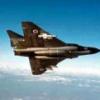


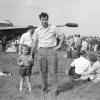


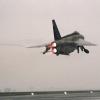

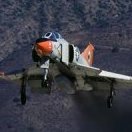
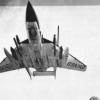
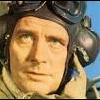


.thumb.jpg.2c282efcc138b7cf7f1e1586a9c534d2.jpg)

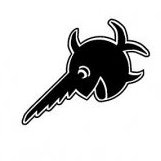
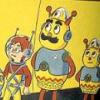
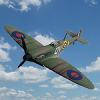




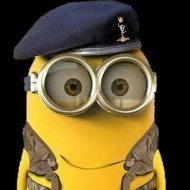
.thumb.jpg.d17ff607fc7e89ed057e63fcb6f2a888.jpg)


